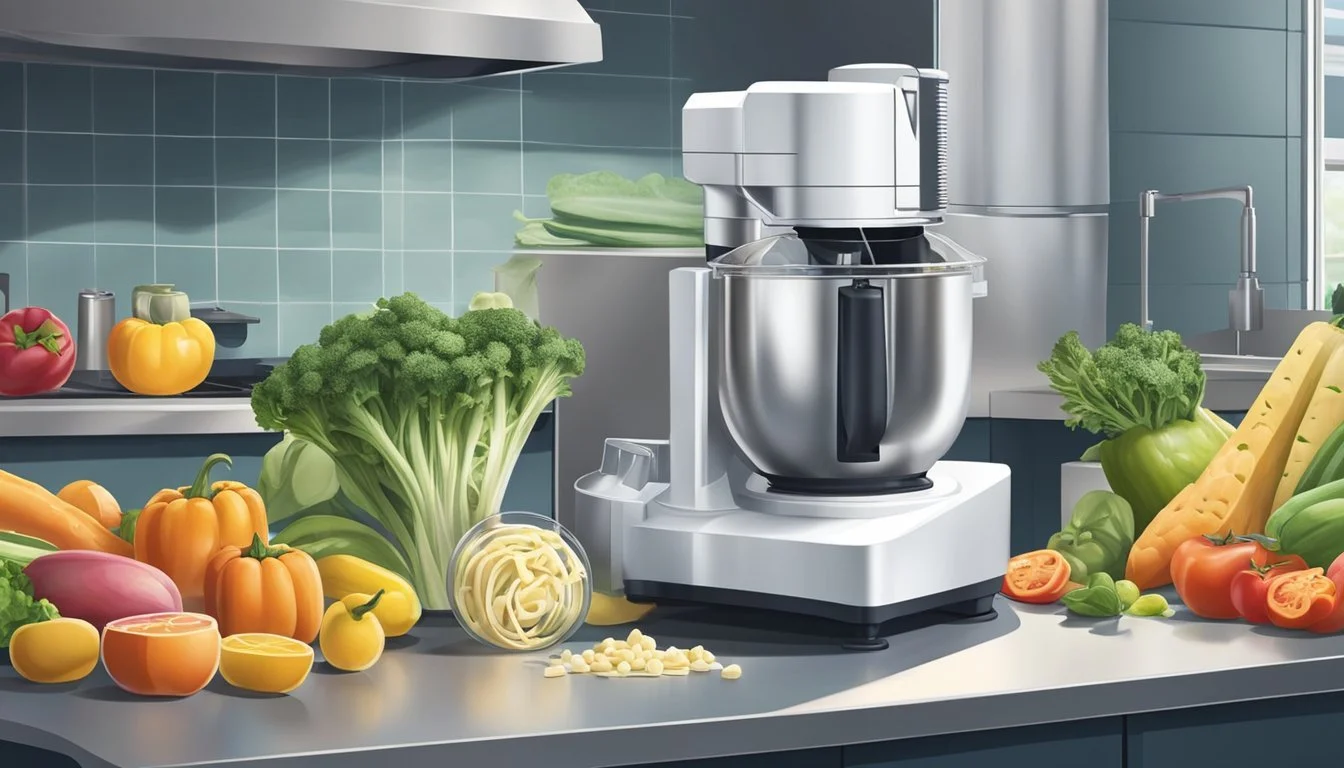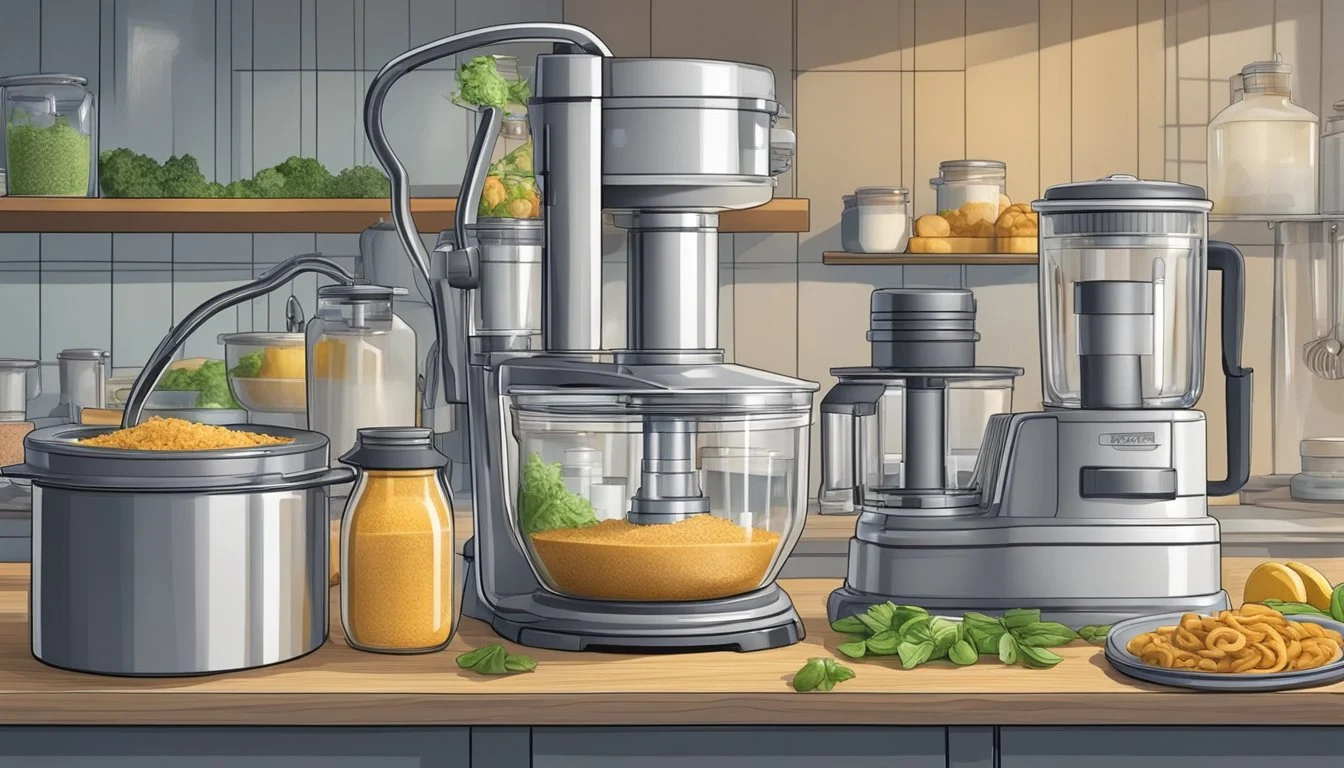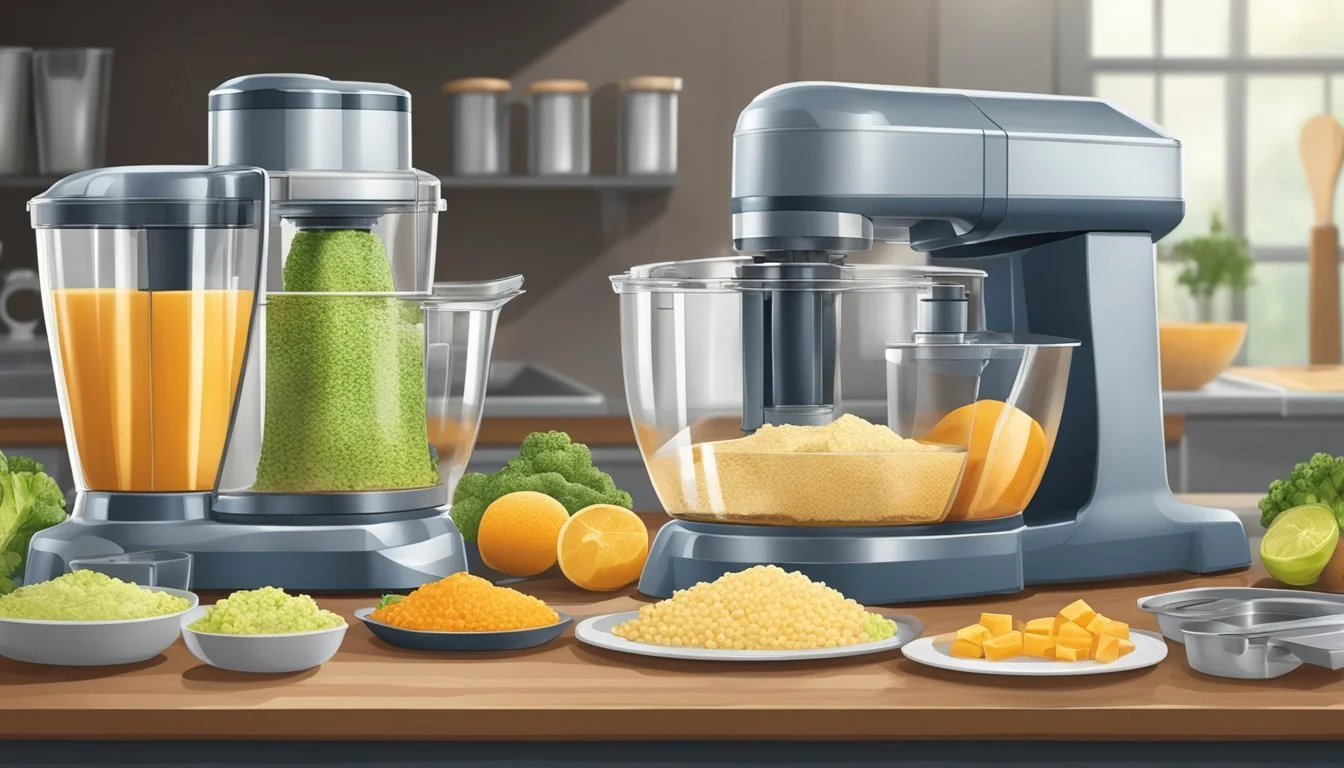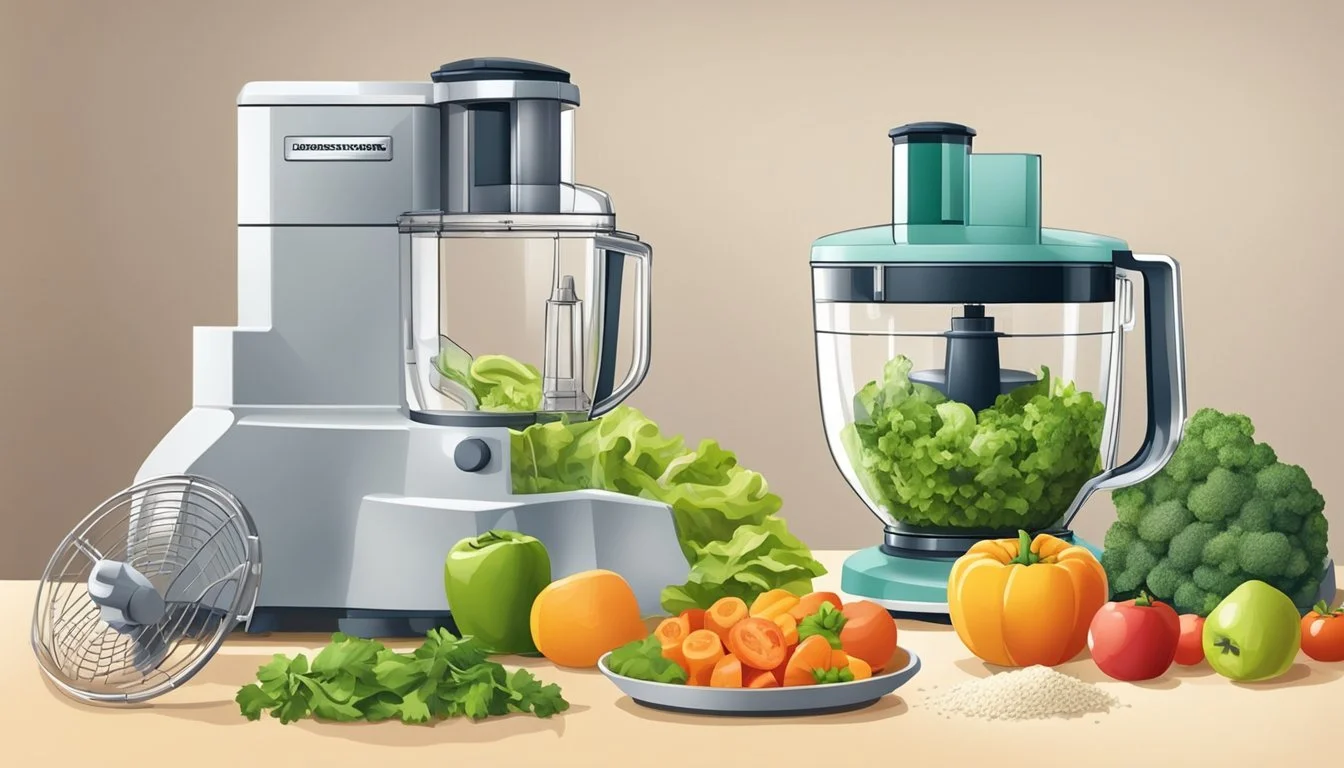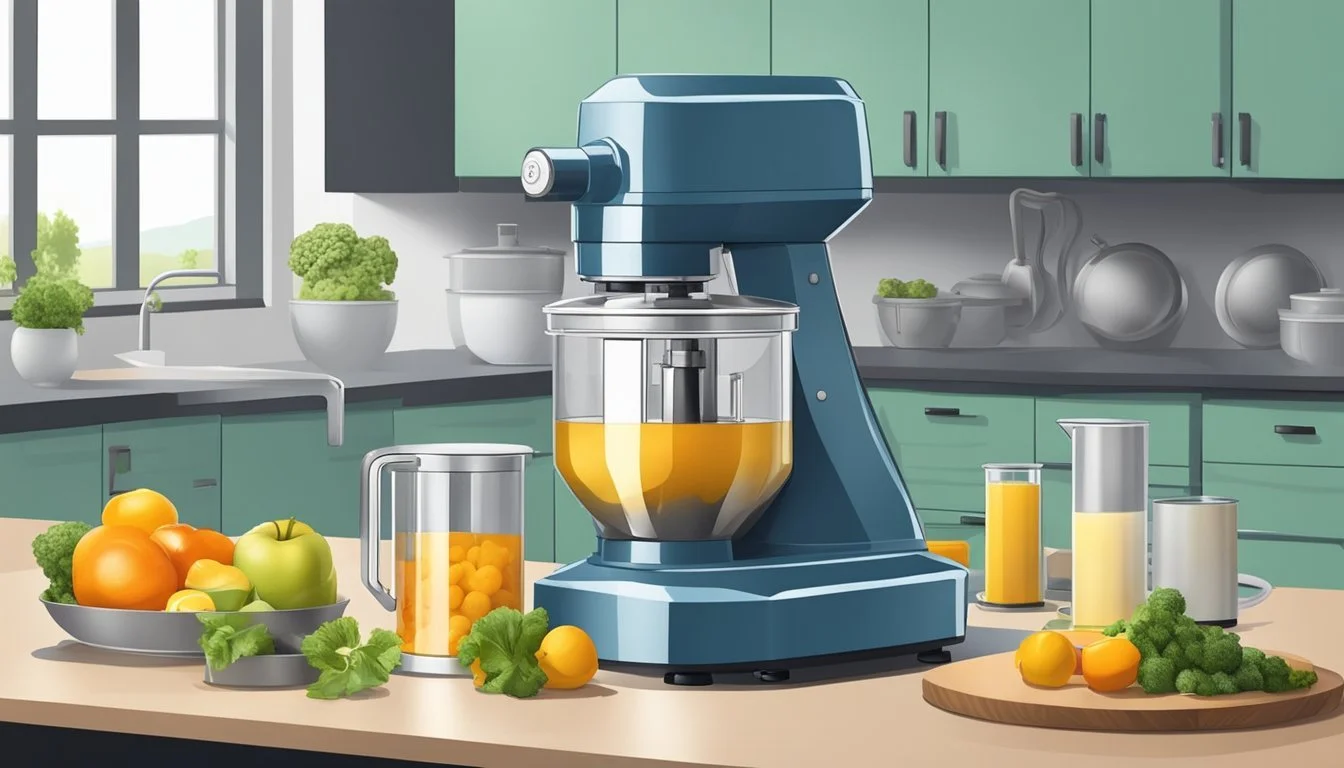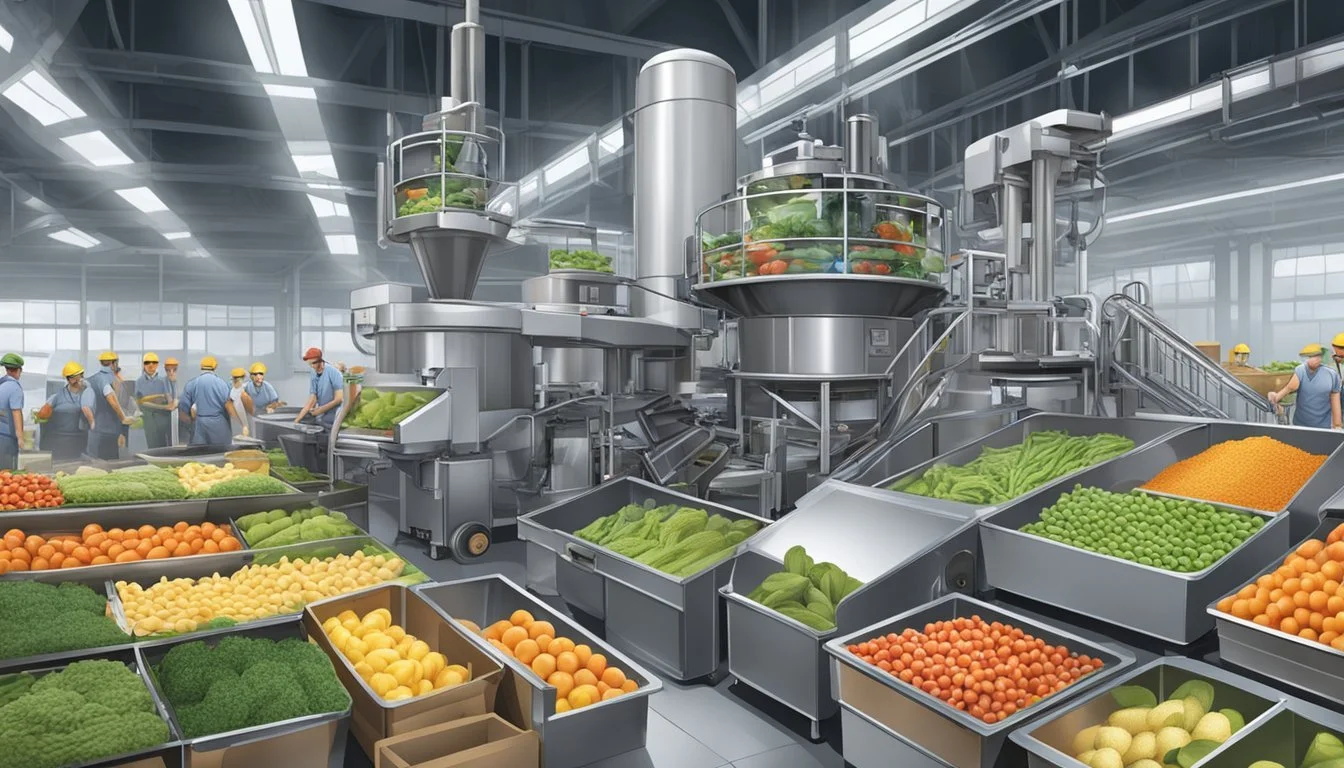Maximize Efficiency with an Industrial Food Processor
Key Strategies for Upscaling Homestead Food Production
Industrial food processors have become vital in large-scale homestead food preparation, where the efficiency and capacity to handle vast quantities of food are paramount. They are engineered to support the rigorous demands of heavy-duty processing, enabling homesteaders to save time and increase productivity. With a range of motor power, typically from 0.5 to 3 horsepower, these robust machines have the torque necessary to deal with a variety of ingredients, from chopping vegetables to blending doughs, facilitating a streamlined workflow in a bustling kitchen environment.
The importance of selecting the correct type of industrial food processor cannot be understated. Features such as size, power, and functionality must align with the specific needs of the homestead. For instance, a homestead that processes large volumes of food for storage or extensive meal preparation would benefit from a full-size model with greater capacity, ensuring the agricultural bounty is quickly transformed into ready-to-use forms without bottlenecking the kitchen's operations.
In terms of specific equipment, certain market leaders, like the Robot Coupe CL50, offer continuous feed food processors with 1.5 horsepower engines capable of servicing up to 1500 servings in three hours, marking them as an exemplary option for high-volume tasks. When it comes to energy efficiency, making the right choices at the equipment level, such as selecting a processor with a higher wattage, could result in more efficient operations and reduced energy expenses over time. These decisions are crucial for ensuring that a homestead kitchen not only meets its culinary demands but also operates with optimal energy management.
Understanding Industrial Food Processors
Industrial Food Processors are pivotal in large-scale homestead food preparation, offering unparalleled power, capacity, and efficiency. These machines meet demanding food processing requirements with speed and durability, becoming essential for any sizable operation.
Types and Features
There are several types of industrial food processors, each with distinct features catering to various processing needs:
Buffalo Chopper: Ideal for heavy-duty chopping with its high-speed rotating bowl and sharp blades, providing consistency in cut size.
Continuous Feed Processor: Perfect for high-volume processing, this machine allows for constant addition of ingredients, streamlining workflow.
Batch Bowl Processor: Suitable for mixing, pureeing, and chopping in fixed quantities, this processor ensures uniformity and quality.
Each unit possesses powerful motors that drive their robust stainless steel components. Versatility is another significant aspect; they can chop, grind, puree, and mix with impressive speed.
Key Features:
Power: Varies widely, but industrial processors typically offer higher power for sustained use.
Capacity: From small-batch bowl units to large-capacity continuous models to accommodate various operations.
Speed: Multispeed options and variable controls for precision processing.
Durability: Constructed from quality materials like stainless steel for longevity and resilience.
Selecting the Right Model
When choosing a commercial food processor for large-scale food preparation, regard must be given to specific requirements:
Capacity: Match the processor size with the volume of food that needs processing; consider both current and anticipated needs.
Power and Speed: Ensure the motor can handle the toughest tasks and look for variable speed options for flexible operations.
Versatility: Opt for models that offer multiple attachments or functions, which can adapt to different tasks and recipes without the need for separate machines.
Durability: Prioritize processors with a proven track record of withstanding heavy usage; robust construction ensures minimal downtime and repairs.
Selection Criteria:
Power: Opt for high horsepower for demanding tasks.
Capacity: Choose based on quantity requirements.
Speed: Seek processors with variable speed settings.
Durability: Ensure stainless steel construction for durability.
Maximizing Efficiency in Food Processing
In large-scale homestead food preparation, efficiency in processing is paramount. The following sections explore strategies to optimize processing time and achieve consistency and quality, which are critical in employing an industrial food processor.
Optimizing Processing Time
When aiming to enhance efficiency, reducing processing time without sacrificing quality is essential. To optimize processing time, homesteaders must choose the right equipment tailored to specific tasks like mixing, chopping, slicing, dicing, shredding, grating, kneading, grinding, and pureeing. The integration of a continuous feed food processor allows uninterrupted processing, making it possible to handle large quantities swiftly. Moreover, opting for a batch bowl food processor is suitable for tasks that require mixing or blending to a particular consistency.
Chopping and Dicing: Sharp, precise blades reduce the time taken per batch while ensuring uniform cuts.
Kneading and Grinding: Powerful motors provide quick action, shortening the processing timeline.
Achieving Consistency and Quality
Consistent results are integral to maintaining quality in large-scale prep. Industrial food processors can be calibrated to deliver uniform size and texture, crucial for homesteaders striving for professional standards. Here’s how consistency and quality can be achieved:
Slicing and Shredding: Use adjustable blades to ensure every piece meets the desired specification.
Mixing and Pureeing: Consistent speeds help maintain texture, blending ingredients smoothly.
By focusing on precision and speed, homesteaders can streamline their food processing routine. This results in high-quality outputs necessary for efficiency and success in large-scale food preparation.
Key Components of Food Preparation
When incorporating an industrial food processor into large-scale homestead food preparation, it's essential to understand how to efficiently process a variety of food types. The right use of attachments and accessories can further enhance the versatility of the machine, leading to high-quality output.
Preparing Different Types of Foods
An industrial food processor excels in handling large quantities of food with speed and precision. For instance, vegetables can be chopped for coleslaw or sliced for canning effortlessly. Making purees and sauces is an efficient operation, with the machine smoothly blending ingredients to the desired consistency. Soups benefit from the fine texture that a processor can achieve by emulsifying vegetables and liquids. In meat processing, a food processor can grind and mix ingredients for items like sausage, maintaining both texture and flavor integrity.
Using Attachments and Accessories
The functionality of a processor extends with the use of various attachments and accessories:
Chopping/Mixing Blade: This standard attachment is key for making dips and emulsifying dressings.
Slicing Discs: They come in varied thicknesses; ideal for preparing vegetables for different recipes.
Grating Discs: Used for shredding cheese or vegetables, these discs facilitate quick preparation of ingredients for dishes like coleslaw.
Whipping Disc: It helps in preparing frozen desserts and aerating creams.
Each attachment is designed to optimize the food preparation process, ensuring consistency and quality across large volumes of food.
Safety and Sanitation Protocols
Ensuring a safe and sanitary working environment is crucial when using an industrial food processor for large-scale homestead food preparation. Incorporating comprehensive safety and sanitation protocols upholds both food safety and worker wellbeing.
Maintaining a Safe Workspace
A safe workspace involves both the design of the food processing area and the daily practices that uphold safety. The quality and durability of the industrial food processor should be matched with safety features such as emergency stop buttons and shield guards to prevent accidents.
Checklist for a Safe Industrial Food Processing Workspace:
Emergency Procedures: Clearly documented and easily accessible.
Personal Protective Equipment (PPE): Mandated use of gloves, slip-resistant footwear, and hairnets.
Equipment Maintenance: Regular checks to ensure all safety features are operational.
Training: Comprehensive training for all staff on equipment use and safety protocols.
Adhering to Food Safety Standards
To prevent contamination and ensure the quality of food products, strict adherence to food safety standards is essential.
Key Food Safety Protocols:
Critical Control Points (CCPs): Identify and monitor CCPs to mitigate risks.
Cleaning Regimen:
Daily Sanitation: Clean processing lines at the end of each use.
Deep Cleaning: Schedule periodic thorough cleanings.
Cross-Contamination: Strict procedures to prevent allergen and microbial contamination.
Record Keeping: Document sanitation processes for traceability and accountability.
Maintaining both equipment and environmental cleanliness is vital. A clean workspace is part of protective measures to ensure that food safety hazards are managed effectively.
Performance and Productivity Enhancements
Maximizing efficiency and productivity in large-scale homestead food preparation involves the strategic use of modern food processors. These machines incorporate advanced automation features and technology to streamline processes, ensuring consistent quality and output.
Leveraging Automation Features
Automation stands at the core of enhanced performance within industrial food processors. These machines intelligently incorporate programmable settings for speed and function to process large volumes of food with minimal human intervention. Automation helps in maintaining consistency across batches, crucial for both quality control and scaling up production. The ability to have continuous feed systems ensures a steady processing line, which translates to consistent product quality and enhanced efficiency.
Reducing Prep Time with Advanced Technology
Advanced technology in industrial food processors significantly reduces preparation time, allowing for faster turnaround. Key technological advancements to look for include:
High-power motors capable of handling tough, dense ingredients quickly.
Various cutting tools that cater to different prep requirements such as slicing, dicing, and shredding.
High-speed capabilities ensuring the swift processing of ingredients, which is essential when dealing with perishable goods.
Utilizing industrial food processors with these sophisticated technologies allows large-scale operations to work efficiently, managing more tasks in less time while maintaining high standards of product quality.
Maintaining Your Industrial Food Processor
Proper maintenance ensures an industrial food processor's longevity and performance. Overlooking regular upkeep can cause performance hiccups and even unscheduled downtime, which is costly in terms of both time and resources.
Routine Cleaning and Care
Industrial food processors require regular cleaning to prevent food contamination and ensure efficient operation. Users should:
Daily: Wipe down the exterior with a mild detergent and sanitize. Remove and hand-wash removable parts with hot, soapy water.
Weekly: Check and clear food particles from hard-to-reach areas to prevent bacterial growth.
Monthly: Inspect seals and gaskets for wear, replacing them as necessary to maintain the integrity of the equipment.
It's essential to follow the manufacturer's instructions on cleaning to avoid any damage that may void the warranty.
Addressing Common Wear and Tear
To sustain the performance of a heavy-duty food processor, staying ahead of wear and tear is crucial. Users should monitor for common issues such as:
Dull blades which can be a sign of wear; they should be sharpened or replaced regularly.
Motor strain indicated by unusual noises or smells, which warrants an inspection by a professional.
Worn-out pushers or hoppers, which can compromise safety and efficiency, and should be replaced as soon as wear is noticed.
Regular maintenance checks can extend the durability and lifecycle of the processor. A comprehensive maintenance strategy and adherence to warranty conditions will reduce costs associated with repairs and parts replacement.
Economic Considerations
When investing in an industrial food processor for large-scale homestead food preparation, one must consider the financial implications of such a decision carefully. Analysing the balance between initial costs and potential long-term gains is crucial for cost-effective operations and ensuring value for money.
Assessing Initial Investment vs. Long-Term Benefits
The initial investment in a high-capacity industrial food processor can be substantial. This cost includes not just the acquisition of the equipment but also installation and associated infrastructure upgrades. One must weigh these upfront expenses against the long-term benefits that come from increased efficiency and production capacity. An industrial food processor can significantly reduce labor hours needed for food preparation, which translates to long-term cost savings.
Key points for consideration:
Purchase price and installation costs
Operational efficiency gains
Labor savings
Increased production capability
Long-term maintenance expenses
Calculating Return on Investment
Calculating the Return on Investment (ROI) helps determine the time it will take for the food processor to pay for itself through increased efficiency and production. Here's a simplified example of how ROI might be calculated:
Calculate annual savings: Estimate how much money will be saved annually due to increased efficiency (e.g., labor, time).
Subtract annual operating costs: From the annual savings, subtract the costs of running the equipment (e.g., electricity, maintenance).
Determine net annual savings: The result is the net annual savings provided by the food processor.
Divide initial costs by annual savings: Dividing the total initial costs by the annual net savings gives the number of years it will take for the savings to cover the initial investment.
Example ROI Calculation:
Description: Initial Investment
Amount (USD): 50,000
Description: Annual Savings from Efficiency Gains
Amount (USD): 15,000
Description: Annual Operating Costs
Amount (USD): 5,000
Description: Net Annual Savings
Amount (USD): 10,000
Description: Years to ROI
Amount (USD): 5 years
In this example, the industrial food processor would pay for itself in 5 years of operation. A quicker ROI indicates better cost-effectiveness and value for money, critical factors in making a sound economic decision.
Versatile Applications in Food Service
Industrial food processors serve as a cornerstone in large-scale food preparation with their robust versatility, streamlining operations in diverse settings from restaurants to cafeterias.
Industrial vs. Commercial Use Cases
Industrial food processors stand at the heart of food production facilities, boasting superior power and capacity. They adeptly manage large volumes that surpass the capabilities of standard commercial equipment, making them indispensable for massive operations that require processing bulk quantities efficiently.
Restaurants often utilize commercial food processors for their daily prep work, valuing their speed and consistency for a la carte service.
Catering Companies favor the versatility of industrial processors to meet varying menu demands for large events, where volume and speed are crucial.
Cafeterias: In institutional settings, industrial processors are vital in delivering consistent results for high-volume meal prep on a daily basis.
Expanding Menu Options with Versatile Equipment
With a range of functions, industrial food processors empower commercial kitchens to diversify and expand their offerings. They allow chefs to innovate and explore new menu ideas without compromising on efficiency.
Versatility: Advanced features such as multiple blades and variable speed settings enable preparations ranging from coarse chopping to fine emulsifying.
Applications: The ability to quickly shift from creating purees to mixing doughs enhances a kitchen's adaptability and responsiveness to culinary trends.
Conclusion
Industrial food processors stand as critical components in the realm of large-scale homestead food preparation. They offer significant efficiency gains, reducing the time and labor required to process large quantities of food.
Key Benefits:
Time-Saving: These machines perform food prep tasks rapidly, allowing for high-volume processing without compromising on quality.
Versatility: They can chop, grind, puree, and mix, handling diverse ingredients with ease.
Consistent Quality: Users achieve uniform results, essential for both consumer satisfaction and safety standards.
Safety Enhancements: Modern processors are equipped with safety features to protect operators.
Maintaining Food Safety:
These processors ensure a safer food preparation environment. They minimize direct contact between raw ingredients and human handlers, thus reducing the risk of foodborne illness.
Achieving Consistent Results:
Industrial food processors ensure uniformity in product texture and size, which is paramount for the credibility and standardization of food items produced on a large scale.
Considerations:
When choosing an industrial food processor, one should assess their specific needs and the machine's capacity to fulfill them. Criteria such as capacity, power, and the types of processing tasks it can perform are essential to consider.
Investing in a high-quality industrial food processor is a strategic move for large-scale homesteads aiming to upscale their production. These machines are instrumental in achieving optimal productivity, maintaining high standards of food safety, and delivering consistent, quality products to the marketplace.

